Edward Hopper
19 Oct 2022 - 05 Mar 2023
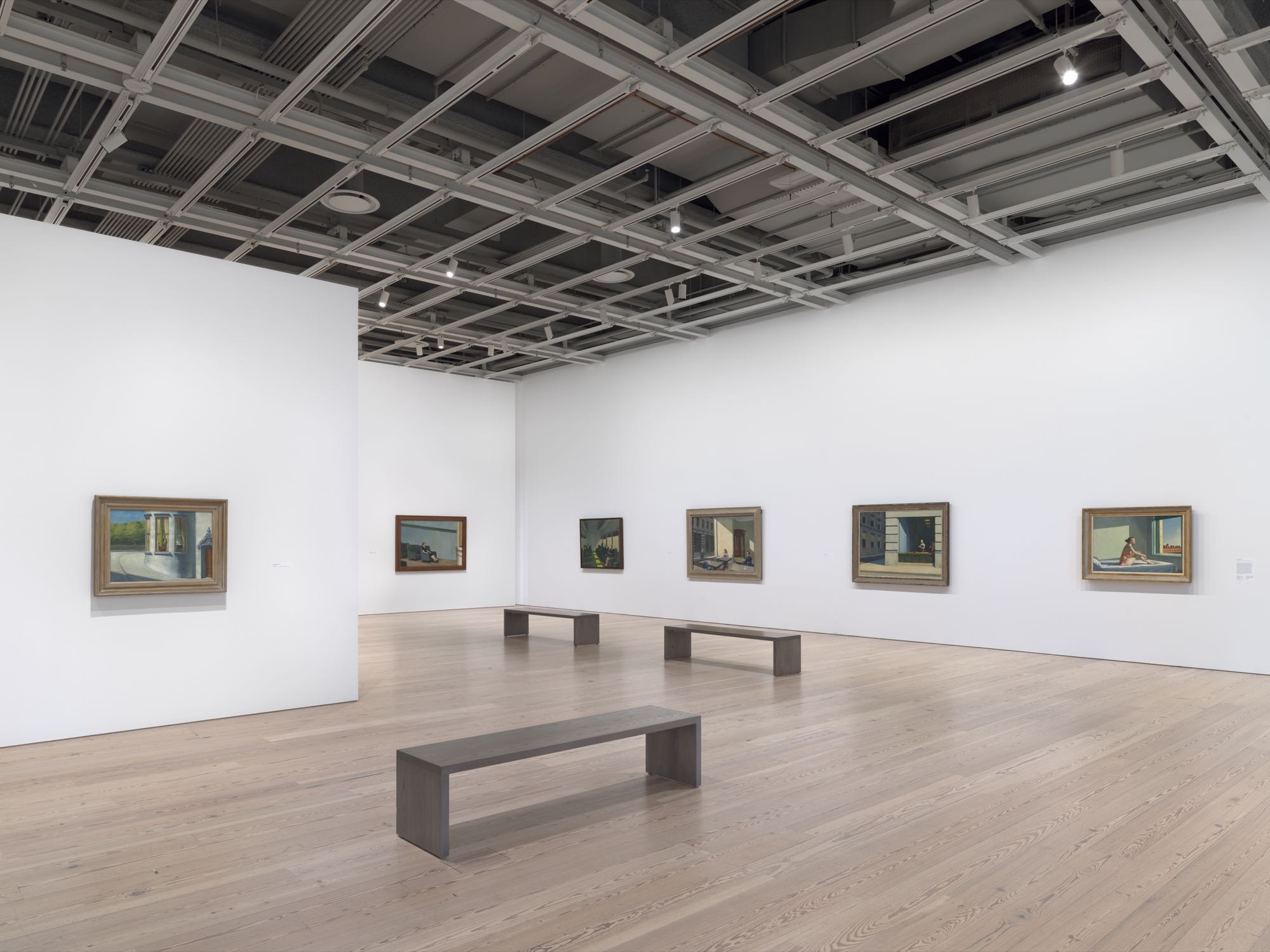
Installation view of Edward Hopper’s New York (Whitney Museum of American Art, New York, October 19, 2022- March 5, 2023). From left to right: August in the City, 1945; Intermission, 1963; Chair Car, 1965; Sunlight in a Cafeteria, 1958; New York Office, 1962; Morning Sun, 1952. Photograph by Ron Amstutz

Installation view of Edward Hopper’s New York (Whitney Museum of American Art, New York, October 19, 2022- March 5, 2023). From left to right:Approaching a City, 1946; New York City (From an Elevated Railroad), c. 1916; Room in Brooklyn, 1932; New York Restaurant, c.1922; Tables for Ladies, 1930; New York Pavements, 1924-25; Night on the El Train, 1918; The El Station, 1919-23. Photograph by Ron Amstutz

Installation view of Edward Hopper’s New York (Whitney Museum of American Art, New York, October 19, 2022- March 5, 2023). From left to right: House at Dusk, 1935; Approaching a City, 1946; Rooftops of Ferry Slip, 1904-06; Ibsen, 1900-06; Group of Musicians in an Orchestra Pit, 1904-06; Mounted Cop, 1899-1906; Ibsen (At the Theater), 1900; The El Station, 1908; Three Men at an Art Exhibition, 1900-03; Sketches of an ‘L Guard, 1899; Ferry Slip, 1904-06; Moving Train, 1900; Blackwell’s Island, 1911; South of Washington Square, 1915; Study of Three Men in Suits and Hats Seated on Bench, 1895-99; Tugboat with Black Smokestack, 1908; At the Theater, 1916-22; Solitary Figure in a Theater, 1902-04; Self- Portrait, 1903-06. Photograph by Ron Amstutz
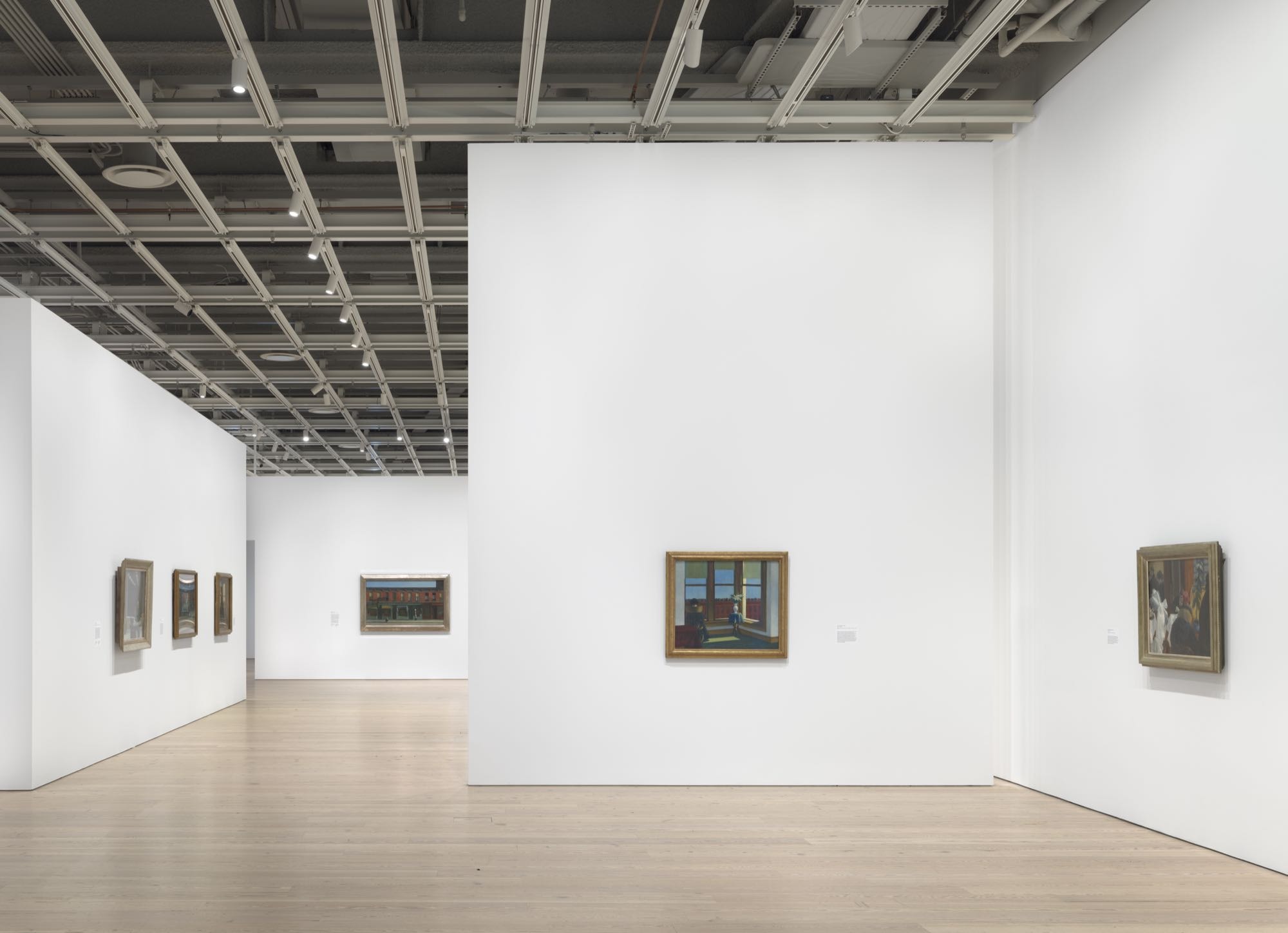
Installation view of Edward Hopper’s New York (Whitney Museum of American Art, New York, October 19, 2022- March 5, 2023). From left to right: Automat, 1927; Office in a Small City, 1953; Sunlight on Brownstones, 1956; Early Sunday Morning, 1930; Room in Brooklyn, 1932; New York Restaurant, c. 1922. Photograph by Ron Amstutz

Installation view of Edward Hopper’s New York (Whitney Museum of American Art, New York, October 19, 2022- March 5, 2023). From left to right: Selection of Hopper’s Illustrations for Carrol D Murphy’s article “What Makes Men Buy?”, System, the Magazine of Business, September 1912; Selection of Hopper’s Illustrations for Carrol D Murphy’s article “The Spur of Pay and Promotion”, System, the Magazine of Business, June 1913; One of Hopper’s Illustrations for Charles Weinfeld’s article, “How I Sell Life Insurance”, System, the Magazine of Business, November 1913; Office at Night, 1940; ; Entries from 1920 Hopper’s Artist’s Ledger- Book IV, 1913-67; Wearing Apparel Show catalogue and directory, Madison Square Garden, New York, 1910; Brighton Flat Clasp Garters, c.1909-11; Samuel W. Peck & Co. (“Sampeck clothes”), c. 1911-12; National Cigar Stands, c. 1911-12; Brigham, Hopkins Company Straw Hats (brochure), c. 1908; Scaffolding by Chesebro Whitman Co. Inc, c 1911-12; RB Fashion-Clothes, c.1911-1912; Brandegee Kincaid & Co., C. 1909-11; Knothe Unseen Suspenders, c. 1917-20; Cover Art by Hopper for Hotel Management, Morse Dry Dock Dial, La France, Tavern Topics, The Express Messenger, and Wells Fargo Messenger, 1917-25; New York and Its Houses, c. 1906- 10; A Theater Entrance, 1906-10; In A Restaurant , 1916-25; Bulletin of the New York Edison Company, 1906-07; Bulletin of the New York Edison Company, 1906-07; Bricklayer’s Coffee Break, 1907-10; Boy and Moon, 1906-07. Photograph by Ron Amstutz
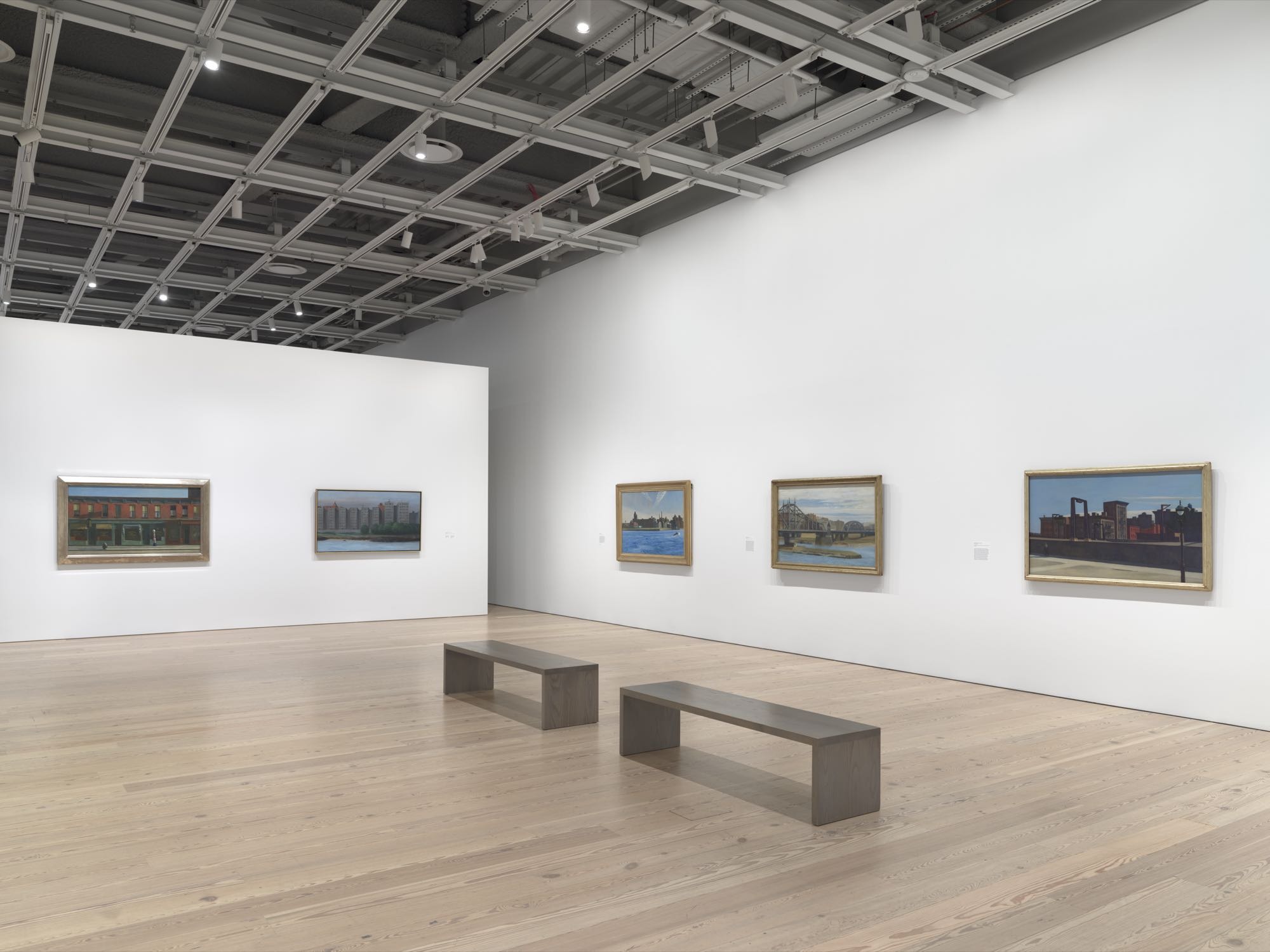
Installation view of Edward Hopper’s New York (Whitney Museum of American Art, New York, October 19, 2022- March 5, 2023). From left to right: Early Sunday Morning, 1930; Apartment Houses, East River, 1930; Blackwell’s Island, 1928; Macomb’s Dam Bridge, 1935; Manhattan Bridge Loop, 1928. Photograph by Ron Amstutz

Installation view of Edward Hopper’s New York (Whitney Museum of American Art, New York, October 19, 2022- March 5, 2023). From left to right: New York Office, 1962; Study of Jo Hopper Seated, c. 1945-50; Study of Jo Hopper Reading, 1925; Jo Hopper Reading; 1935-40; Study of Jo Hopper Reading, 1934-35; Study of Jo Hopper Reading, c .1924-30; Jo Painting; 1936; Josephine Nivison Hopper, 74 Stairs to Studio at Three Washington Square North, c. 1932; Early Sunday Morning, 1930; Apartment Houses, East River, c. 1930. Photograph by Ron Amstutz

Installation view of Edward Hopper’s New York (Whitney Museum of American Art, New York, October 19, 2022- March 5, 2023). From left to right: Two Comedians, 1966; New York Movie, 1939; Intermission, 1963. Photograph by Ron Amstutz
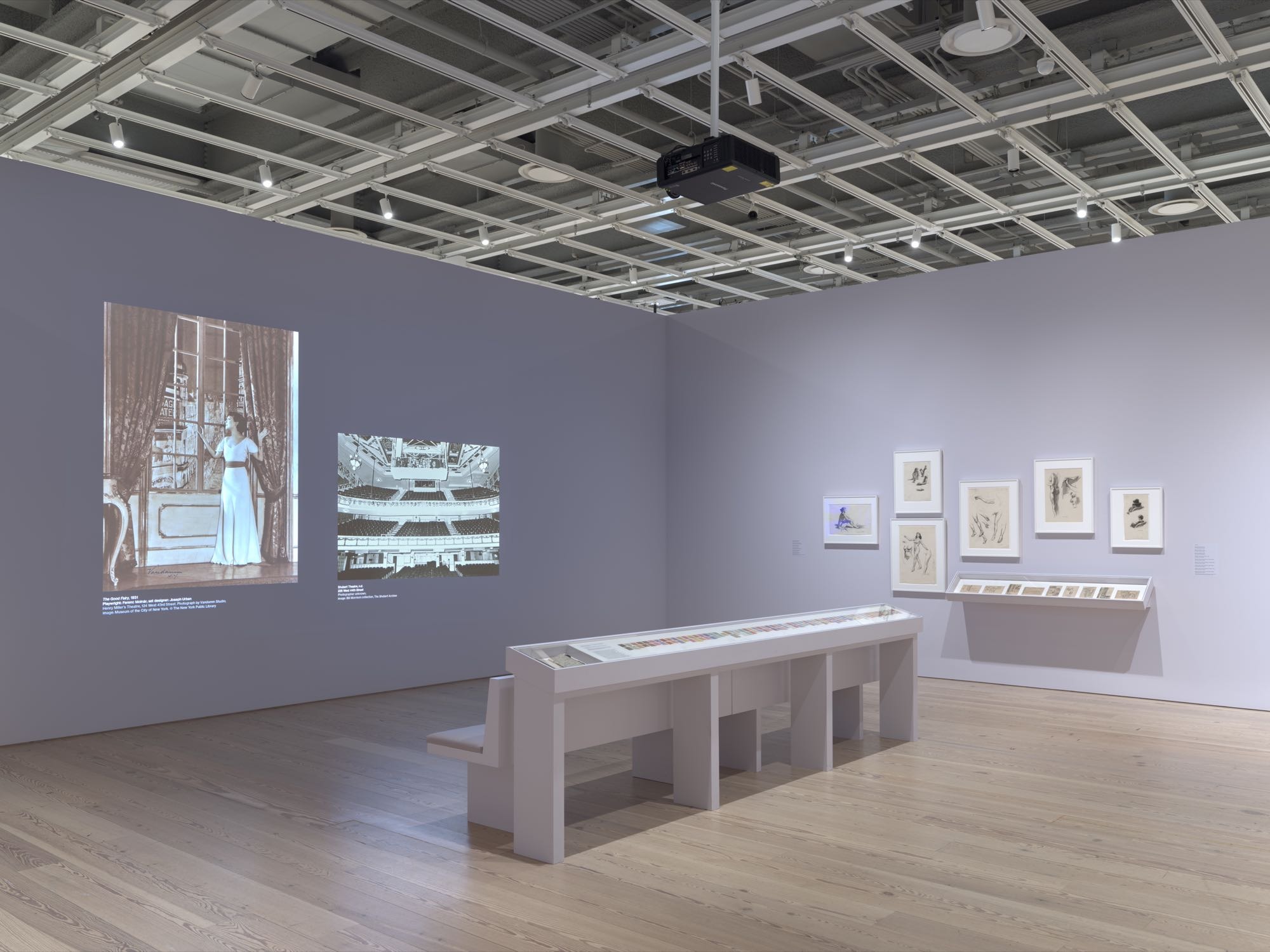
Installation view of Edward Hopper’s New York (Whitney Museum of American Art, New York, October 19, 2022- March 5, 2023). From left to right: Digital slide show composed of photographs of stage designs, performances and theater interiors related to productions attended by Edward and Jo Hopper, c. 1901 – 49; Slection of Hopper’s ticket stubs, 1925-37; Josephine Hopper’s untitled black two-ring notebook, c. 152-61; Study for Morning Sun, 1952; Study for Girlie Show, 1941; Study for Nighthawks, 1941 or 1942; Study for Girlie Show, 1941; Study for Morning in a City, 1944; Study for New York Movie, 1939; Study for New York Movie (Strand theatre), 1938; Study for New York Movie (Republic theatre), 1938; Study for New York Movie (Globe theatre), 1938; Study for New York Movie (Republic theatre), 1938; Study for New York Movie (Palace theatre), 1938; Study for The Sheridan Theatre, 1937; Study for Girlie Show, 1941; Study for Girlie Show, 1941; Study for Girlie Show, 1941. Photograph by Ron Amstutz
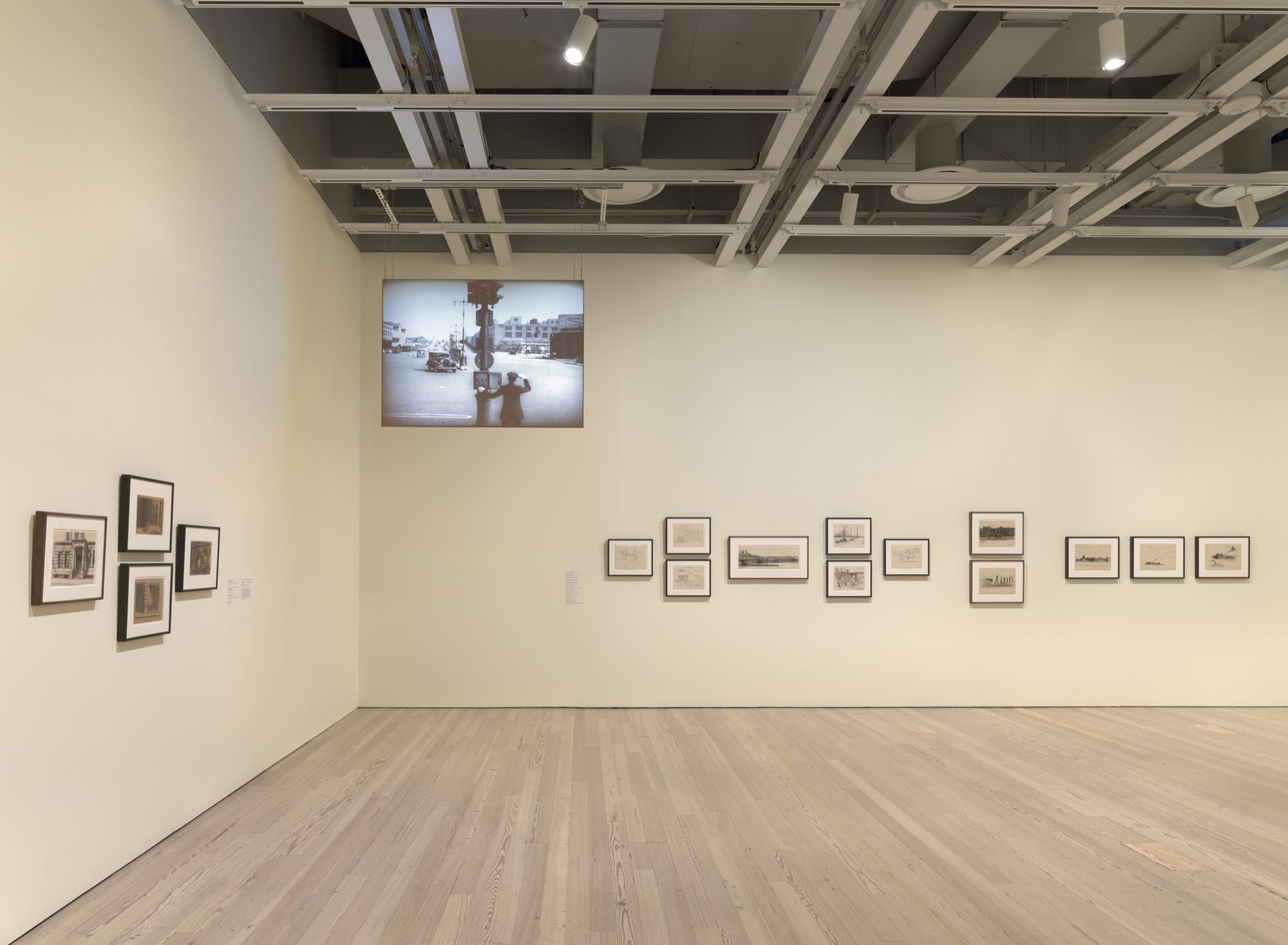
Installation view of Edward Hopper’s New York (Whitney Museum of American Art, New York, October 19, 2022- March 5, 2023). From left to right: Study for Summertime, 1943; Three Figures on Steps (Study for Sunlight on Brownstones) 1954, Study for New York Office, 1962; Study for The City, c. 1927; British in New York from the series The March of Time, 1937; Study for Macomb’s Dam Bridge, 1935; Study for Macomb’s Dam Bridge, 1935; Study for Macomb’s Dam Bridge, 1935, Study for Macomb’s Dam Bridge, 1935; Study of a Park with Bridge, c. 1920; Study of a Landscape with Bridge, n.d; Study of a River Landscape with Bridge and Buildings, n.d; On East River, c. 1930; Apartment Houses, Harlem River, c 1930; Study for Blackwell’s Island, 1928; Study for Blackwell’s Island, 1928; Study for Blackwell’s Island, 1928. Photograph by Ron Amstutz
Edward Hopper’s New York, on view at the Whitney Museum of American Art from October 19, 2022, through March 5, 2023, offers an unprecedented examination of Hopper’s life and work in the city that he called home for nearly six decades (1908–67). The exhibition charts the artist’s enduring fascination with the city through more than 200 paintings, watercolors, prints, and drawings from the Whitney’s preeminent collection of Hopper’s work, loans from public and private collections, and archival materials including printed ephemera, correspondence, photographs, and notebooks. From early sketches to paintings from late in his career, Edward Hopper’s New York reveals a vision of the metropolis that is as much a manifestation of Hopper himself as it is a record of a changing city, whose perpetual and sometimes tense reinvention feels particularly relevant today.
Instantly recognizable paintings featured in the exhibition, such as Automat (1927), Early Sunday Morning (1930), Room in New York (1932), New York Movie (1939), and Morning Sun (1952), are joined by lesser-known yet critically important compositions including a series of watercolors of New York rooftops and bridges and the painting City Roofs (1932).
“Edward Hopper’s New York offers a remarkable opportunity to celebrate an ever-changing yet timeless city through the work of an American icon,” says Adam D. Weinberg, the Alice Pratt Brown Director of the Whitney Museum. “As New York bounces back after two challenging years of global pandemic, this exhibition reconsiders the life and work of Edward Hopper, serves as a barometer of our times, and introduces a new generation of audiences to Hopper’s work by a new generation of scholars. This exhibition offers fresh perspectives and radical new insights.”
Edward Hopper’s New York is organized by Kim Conaty, Steven and Ann Ames Curator of Drawings and Prints, with Melinda Lang, Senior Curatorial Assistant, at the Whitney.
Instantly recognizable paintings featured in the exhibition, such as Automat (1927), Early Sunday Morning (1930), Room in New York (1932), New York Movie (1939), and Morning Sun (1952), are joined by lesser-known yet critically important compositions including a series of watercolors of New York rooftops and bridges and the painting City Roofs (1932).
“Edward Hopper’s New York offers a remarkable opportunity to celebrate an ever-changing yet timeless city through the work of an American icon,” says Adam D. Weinberg, the Alice Pratt Brown Director of the Whitney Museum. “As New York bounces back after two challenging years of global pandemic, this exhibition reconsiders the life and work of Edward Hopper, serves as a barometer of our times, and introduces a new generation of audiences to Hopper’s work by a new generation of scholars. This exhibition offers fresh perspectives and radical new insights.”
Edward Hopper’s New York is organized by Kim Conaty, Steven and Ann Ames Curator of Drawings and Prints, with Melinda Lang, Senior Curatorial Assistant, at the Whitney.
